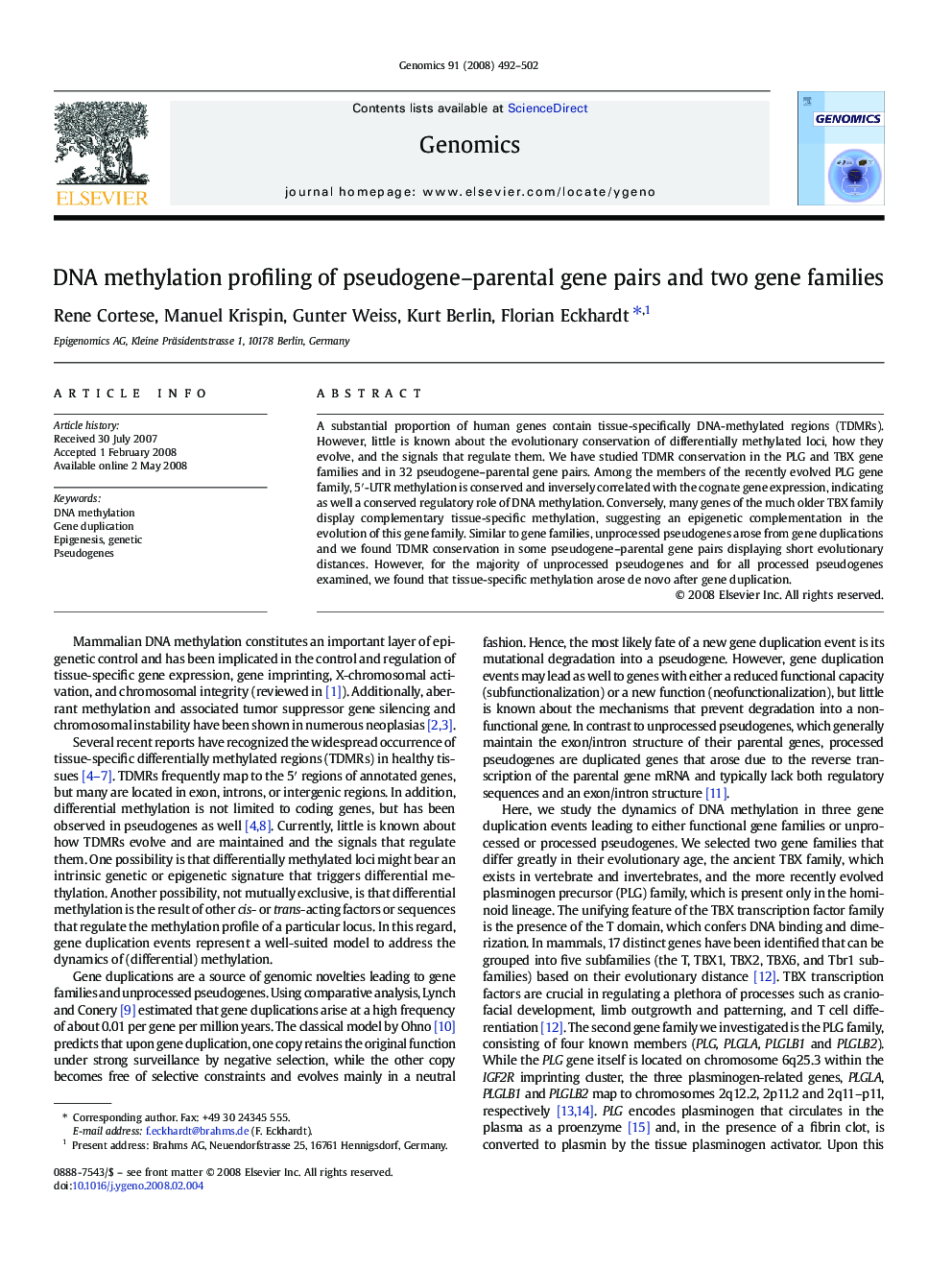| Article ID | Journal | Published Year | Pages | File Type |
|---|---|---|---|---|
| 2820900 | Genomics | 2008 | 11 Pages |
A substantial proportion of human genes contain tissue-specifically DNA-methylated regions (TDMRs). However, little is known about the evolutionary conservation of differentially methylated loci, how they evolve, and the signals that regulate them. We have studied TDMR conservation in the PLG and TBX gene families and in 32 pseudogene–parental gene pairs. Among the members of the recently evolved PLG gene family, 5′-UTR methylation is conserved and inversely correlated with the cognate gene expression, indicating as well a conserved regulatory role of DNA methylation. Conversely, many genes of the much older TBX family display complementary tissue-specific methylation, suggesting an epigenetic complementation in the evolution of this gene family. Similar to gene families, unprocessed pseudogenes arose from gene duplications and we found TDMR conservation in some pseudogene–parental gene pairs displaying short evolutionary distances. However, for the majority of unprocessed pseudogenes and for all processed pseudogenes examined, we found that tissue-specific methylation arose de novo after gene duplication.
